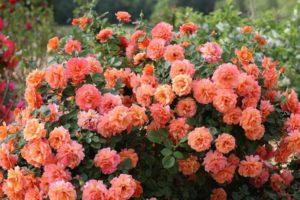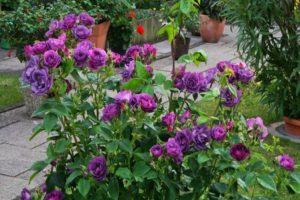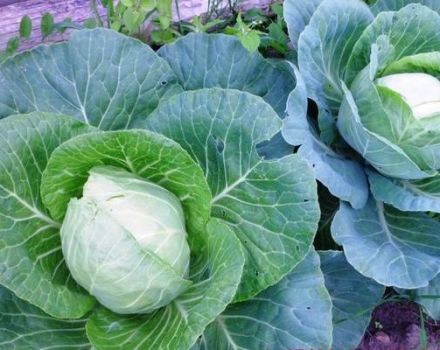The best varieties of park roses, planting and outdoor care for beginners
Today there are several thousand varieties of park roses, which in many ways surpasses any other garden crops. The popularity of these flowers is due to their enchanting attractiveness and aristocracy. However, few people know that park specimens can boast not only amazing appearance, but also fairly simple conditions for maintenance and subtleties of care.
Plant characteristics
These plants usually grow up to 150 centimeters in height. Park plants bloom densely and for a long time - more than one month. The color of the flowers can vary from faded to bright shades, often orange or yellowish. Park specimens require a spacious area, since they grow very wide in breadth. In warm countries, flowers do not need shelter, but in Russia, roses must be covered during frost.
Flowers of this species have a significant advantage, which lies in their amazing endurance and undemanding care. This is due to the fact that the park flowers were bred on the basis of wild rose hips, which have been cultivated for a long time, and have passed selective selection. It is also worth noting that all these unique flowers are conventionally divided into two varieties: varieties with single and double flowering.
Varieties of park roses
Researchers have created a large number of varieties of this plant, which differ in parameters and characteristics.
Variety Westerland
The variety got its name in honor of the German town. This is a fairly tall bush that can reach a height of almost three meters. The plant is distinguished by bright orange buds that thin the strong smell. The flower has fragile shoots that need constant tying. The advantages of this variety include winter hardiness, adaptability to diseases and bad weather conditions. It can change its color depending on the weather, and bloom several times.

Chippendale
This plant is a representative of chameleon flowers. It is considered a relatively new breeder, since this rose was created in 2007. Due to its densely doubled flowers of an aristocratic shape and a bright aroma, the variety is popular.Rose Chippendale - Large branches, orange buds, antique look and shiny foliage.
The variety is adapted to fungal infections and poor climatic conditions. Due to the cold weather, the bush will need shelter.
Louis Audier
This plant belongs to French flowers. It has a powerful bush, bright pink buds up to eight centimeters in diameter, which thin the strong pungent odor. The bush is quite high - up to two meters. It is characterized by adaptability to diseases and low temperatures. Flowering continues throughout the season. The plant definitely needs top dressing, shelter and periodic pruning. Placement is allowed next to coniferous shrubs.

Rose Chinatown
It is a powerful and branched plant with delicate yellow buds that have pinkish blotches. The flower shape is standard, with pointed petals. Differs in adaptability to low temperatures and most diseases. This bush does not tolerate constant sun, prefers partial shade, and is also not adapted to low temperatures. The variety is characterized by dense flowering and a pleasant, delicate scent.
Rose Canadian Park Prairie Joy
This plant typically grows up to three meters high and 125 centimeters wide. The specimen is characterized by pinkish buds and a pleasant delicate aroma. Quite often, this variety is used to create a hedge or decorate a gazebo. Dense flowering continues throughout the season. The main advantage is low prickleness. The most suitable soil for planting a flower is moisture-absorbing soil, which is enriched with humus. Does not need shelter during cold weather.

Features of growing flowers
To make the park flowers enjoyable and admire their appearance, it is very important to know about the peculiarities and nuances of growing these flowers.
Soil preparation and site
The planting hole should be made up to 45 centimeters deep and up to half a meter in diameter. It is recommended to plant the bush in a place that is protected from strong winds. You should not plant the plant in swampy areas and clay soil, since high humidity will be detrimental to the rose.
It is also recommended to give preference to landing sites that are well ventilated. It will not be superfluous to add compost to the ground.
Time to board
The most preferred planting season is autumn, around mid-September and before the first frost. It is at this time of the year that the bushes can best take root, and will bloom in the spring. If roses are planted in the fall, the plant is immediately spud. Spring is also suitable for planting, but such bushes will slightly lag behind autumn flowers.
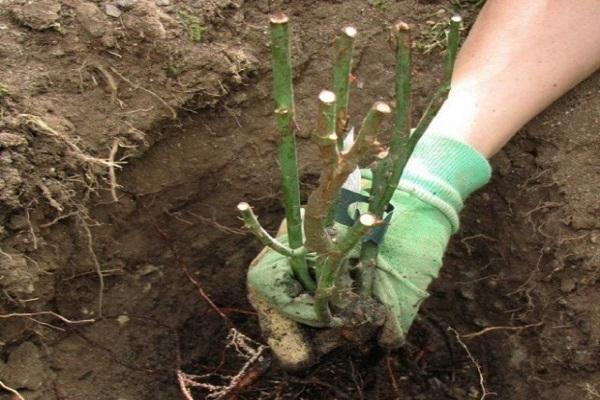
Planting process
To prevent the flower from freezing in winter, it should be deepened a little during planting, and it is also important to cover the grafting site with a layer of earth - about 10 centimeters. Such a measure can protect the grafting site from early wilting and bark problems, but it also promotes the growth of young shoots.
When planting a hedge, the distance should be left more - about 100 centimeters. Varieties that belong to ground cover are planted according to the 70x70 scheme. As a rule, planting park roses in the open field by experienced breeders and beginners requires the following points to be considered:
- The planting pit should be spacious - at least 60 centimeters in diameter and 80 in depth. It is recommended to mix the garden soil with humus, which can ensure dense flowering in the future.
- Instances with closed root systems will simply be placed in a pit and filled up with soil.
- With open roots, the situation is somewhat different: before planting, it is important to inspect the roots in order to remove damaged and rotten ones. Next, a plant is planted with straightened roots.
- Then the planted bush will need abundant watering - one bucket directly under the bush.
- At the final stage, it is recommended to mulch the soil so that moisture can stay as long as possible.
In the future, you will need to maintain soil moisture and water the flowers twice a day.
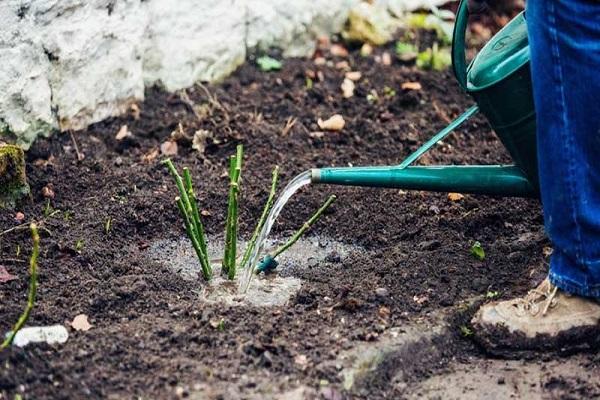
The subtleties of caring for park roses
Original flowers will be able to delight their owner with abundant flowering for a long time only with proper care, as well as the necessary placement conditions.
Watering rules
The park flower is quite whimsical in terms of watering, so you need to water the plant at least three times a week. It is very important that the soil is saturated with water deeply, so at least one bucket is needed. Immediately before watering, the area around the bush must be loosened. However, it is extremely important to pay attention to the weather conditions - the soil should always be damp.
Watering stops only by the end of summer so that the plant has time to start preparing for the cold season and stop growing new shoots.
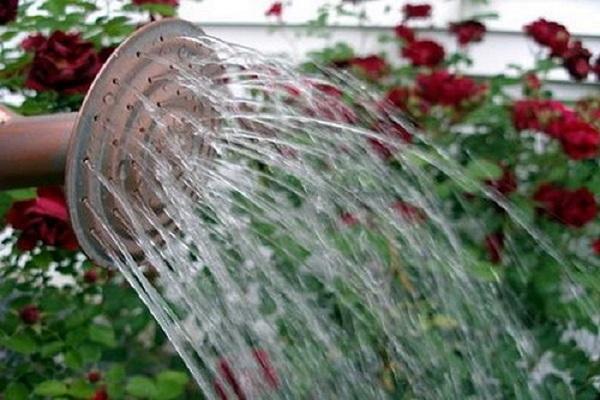
Fertilizing and feeding for better development
Park flowers need constant fertilization. For these purposes, an infusion of ash is suitable, which should be cooked for four hours. Fertilizers are applied in the second year of plant life. Natural fertilizer mixtures or organic fertilizers especially for roses are suitable. This procedure should be carried out up to 2 times a month.
Cropping flowers
Pruning a park rose for the winter is extremely simple - only old, damaged and frozen branches are removed. Also, immediately after flowering, faded buds should be removed. It is extremely important to note that pruning of park roses should not be carried out from August. Otherwise, the shoots will not prepare well for severe frosts and may not survive the winter. In autumn, the branches need to be cleaned of leaves, bend down and cover for the winter.
The root collar is earthed by about 30 centimeters. In the spring, as soon as the snow has melted, the bush must be straightened and the old branches cut off at the root. It is extremely important to process the places where the cut was carried out with a special pitch. No new branches need to be cut.
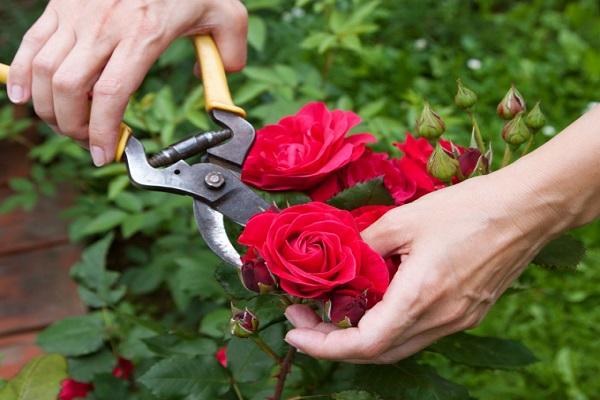
How to cover a park rose for the winter
From above, you can cover the roses with spruce branches or any other non-woven material. An important condition when hiding a flower is that there is good ventilation, and the branches cannot dry out in high humidity and damp weather. Otherwise, mold may form.
Major diseases and pests of culture
Extremely dangerous and common diseases of roses include the following:
- powdery mildew;
- rust;
- spotting;
- gray rot;
- cytosporosis.
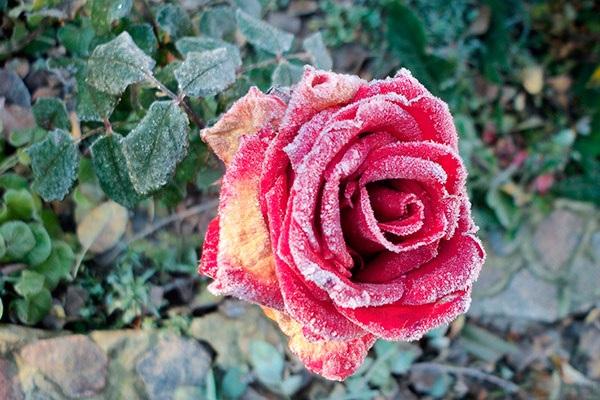
Getting sick, the plant loses its former attractive appearance, however, the complete death of the bush is not excluded. To prevent the development of diseases in early March, roses should be treated with a special solution: copper-soap liquid, Bordeaux liquid or nettle decoction. Also, bushes are often affected by insects: aphids, spider mites, beetles.
Therefore, it is recommended to use a urea solution and timely remove weeds that grow around the bush and attract pests.
Roses breeding methods
Park flowers are propagated in several ways:
- With the help of layering - for this, in early spring, the stems need to be bent to the ground, secured and sprinkled. The next year, they are separated and moved to a permanent place.
- Shoots - one-year-old shoots will need to be separated from the bush, shortened by a third and transplanted to another place.
- The division method is very often used - this procedure is carried out in spring or autumn. For this, a pruner is used, with the help of which a part with one stem and roots is separated.
- With the help of cuttings - the use of lignified or green ones is allowed. The first ones are harvested in the fall, buried in sand, and planted in the spring.The second - as soon as flowering begins.

In this matter, it is important to correctly follow the transplantation technique so as not to damage the seedling - only then will it take root and develop correctly.
Using flowers in landscape design
Park roses are often used to create an original hedge - it not only closes and fences off the garden area, but also acts as a creative decorative element. Roses are often planted in such a way as to create a garden arch or net that covers the gazebo. Also in flower beds, park roses are grown as a tapeworm, so that the attention is focused on the lush flower bush.
